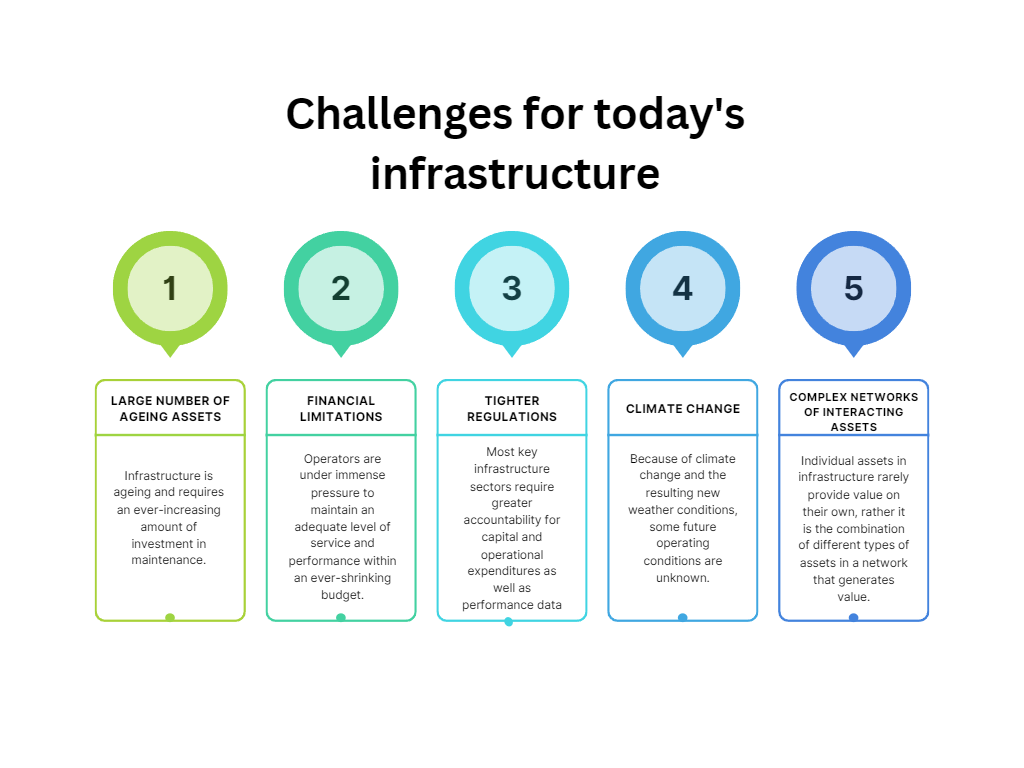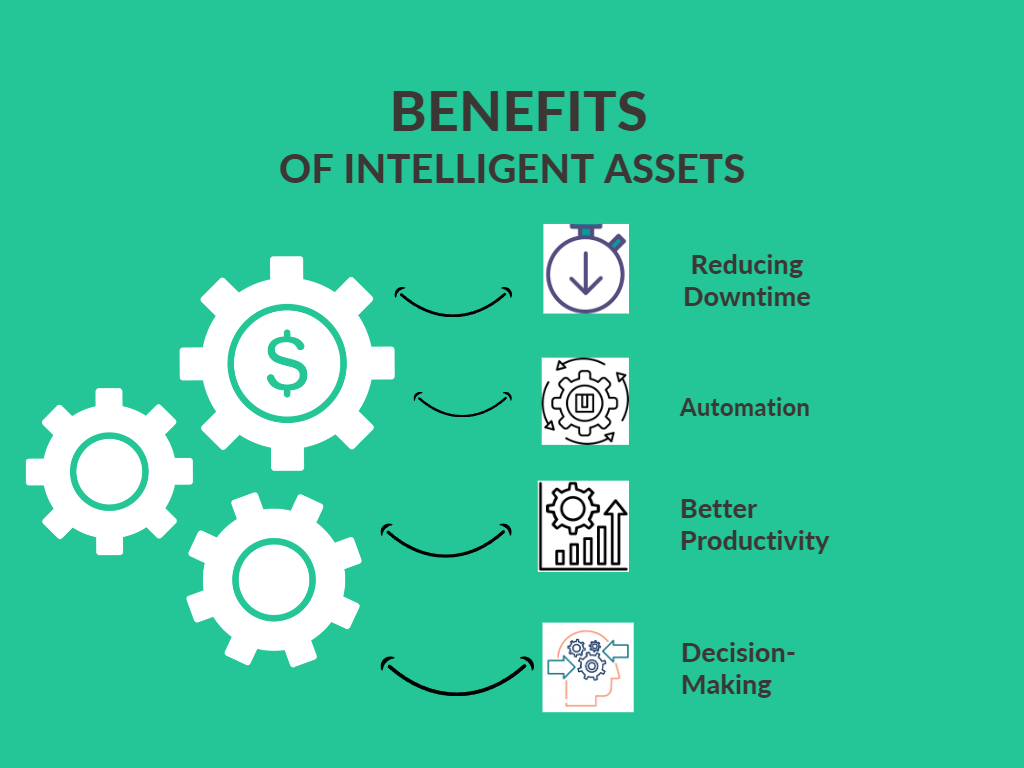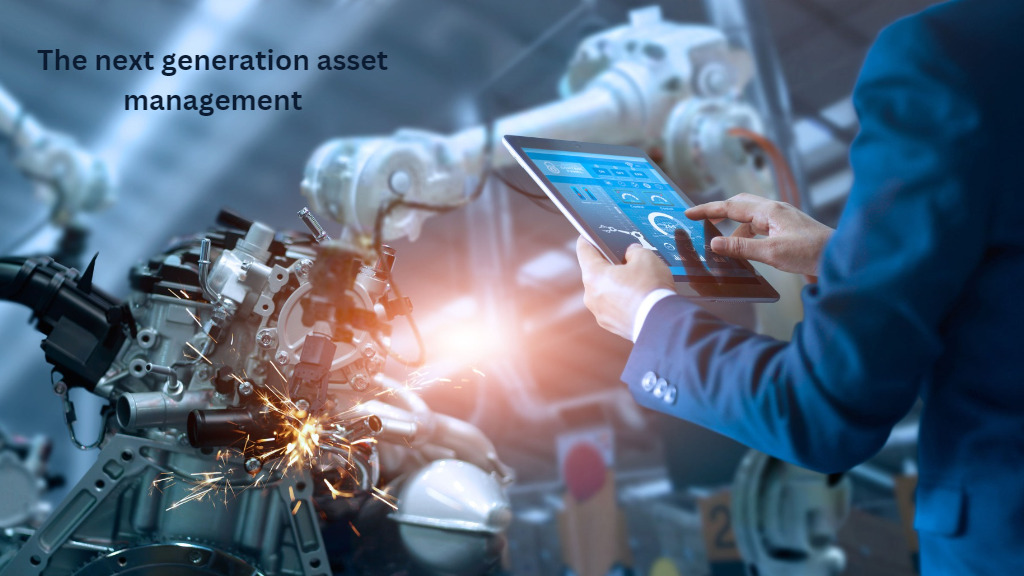Infrastructure is critical to an operational organization, society, and country. Assets play an important role in the day-to-day life of different communities having significant social, environmental, and economic impacts in terms of capital investment, employment, quality of life, resources, energy, and services.
Traditionally, assets have been designed and built for distinct purposes that address specific business and user requirements. This physical siloed approach responds to a trend in which different purposes are combined into the same physical infrastructure.
The main reason for this is the diversification of business and investment to generate autonomous clusters of services. Offices and hotels are merging their work‐hospitality services, correspondingly to factories and warehouses in their use of industrial space and robots. Transportation takes a similar approach, with railway stations proposing dining and shopping services to passengers whereas airports include cinema and other leisure facilities.
Buildings are being transformed into vertical cities, with hotels, gardens, residential apartments, and commercial units spread across multiple floors and public transportation beneath. Based on the pre and post-treatment of human patients, homes and hospitals are also merging. This fusion of functionality and purpose of the built asset allows its users to play multiple roles at the same time, as the same user can be a passenger, patient, office occupant, or diner.
Intelligent asset is an infrastructure asset that
1. Is linked to information and rules that govern how it is intended to be built, maintained, used, refurbished, and demolished, and
2. Allows the asset to support or influence its own use.
Infrastructure Asset Management Challenges today:
The reason for considering an “alternative” asset management approach is that there are currently numerous challenges in managing infrastructure assets in such a way that they continue to provide value to owners and the community at large. Here are the key areas of concern that necessitate a significant change in current practices.

Why implement intelligent asset management?
The circular economy is an economic and environmental necessity, but there is a significant gap between a grand concept and a practical reality. The Internet of Things is the “glue” that connects the trillions of items we consume globally each year with the necessary changes in everyday consumer behavior, product recovery, material separation, and remanufacturing.
Inelligent assets will monitor themselves, make adjustments, and seek assistance when necessary. How can you capitalize on these advancements? The key is simplifying the approach and ensuring you have the necessary building blocks to succeed.
The amount of data surrounding intelligent assets is exploding. This information is priceless, but only if it is properly analyzed and applied. As a result, companies with intelligent assets are more likely to take wise business decisions. Organizations can achieve productivity gains, improve efficiency, and unlock new levels of innovation and operational agility by deploying a judicious mix of intelligent assets across development, operations, and business users, either fully automated or with human intervention.
Here are some of the reasons why your company requires intelligent asset management right now:

- Reduced downtime: Intelligent assets can provide real-time visibility into the equipment’s condition. Advanced analytics can predict and prevent production halts and other issues before they occur.
- Better automation: Intelligent asset management focuses on the automation of operational processes. This simplifies asset maintenance and management, reducing bottlenecks and manual labor while increasing uptime, productivity, and reducing cost.
- Higher productivity: Optimizing production procedures can realize huge productivity gains, and progress can be tracked in real-time.
- Faster decision-making: Gather, analyze, and use the information around assets to help decision-makers make informed operational and strategic decisions with the push of a button.
Is the paradigm shift required?
The prevalence of connectivity, via the Internet of Things and the development of “intelligent assets,” will increase in the coming decade. “How can these technological advancements be used to enable more intelligent economic growth, resource, and food security, and improved infrastructure?” remains unanswered. The Internet of Things is already increasing efficiency in our current linear “take, make, dispose of” economy. Could it, on the other hand, enable a circular economy that is designed to be restorative and regenerative? Could embedding circular economy principles in smart connected systems and devices increase the opportunity significantly?
The bottom line:
Data-driven decision-making can be applied to new areas of human endeavor, according to McKinsey, because it is now possible to monitor and manage physical world items electronically. Intelligent assets, such as infrastructure, buildings, real estate, and cities, offer enhanced functionality for their various users, including residents, travelers, customers, patients, managers, or operators. According to a recent study, the potential to generate information through connected devices provides a $4.6 trillion opportunity in the public sector because of higher efficiency, innovative ways to save money, and revenues.
In addition to providing a better user experience, the increased functionality made possible by the Internet of Things (IoT), Artificial Intelligence (AI), Big Data, Mobile Apps, Virtual Reality (VR), and 5G also supports sustainability and energy efficiency while enhancing asset management and operations for improved business economic performance
How can we help?
Makoro™ recommends and delivers continuous improvement in quality and asset/equipment through-life cost while maintaining high process availability (OEE) and delivering a reduction in downtime.
Makoro™ also has the following benefits:
- Delivers dramatic improvement to overall equipment effectiveness.
- Delivers consistent and optimized Process, Asset, and Equipment high availability.
- Ensures quality and reliability for the lowest-through-life cost using our industry knowledge, expertise, and the next generation Digital-Twin and AI Technologies.
Schedule a call to talk more about your needs and how we can help.


